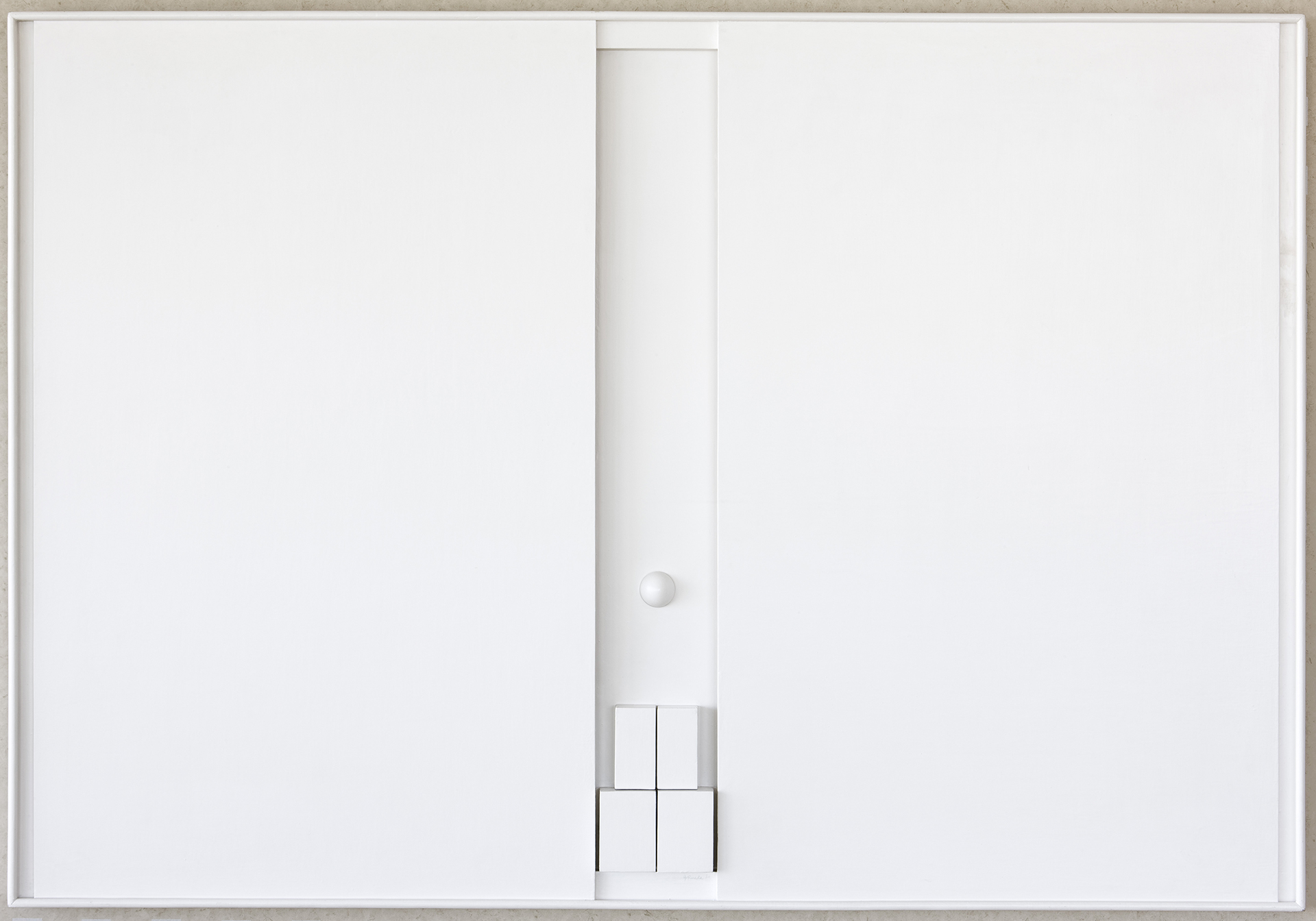
Gerardo Rueda (Madrid, 1926-1996)
White Painting
1970
WORK INFORMATION
Oil and collage on panel, 112 × 162 cm
OTHER INFORMATION
Inscription on the reverse: "Gerardo Rueda / Pintura blanca / 162 × 112 cm / 1970 / óleo sobre madera y collage"
Gerardo Rueda, along with Gustavo Torner and Fernando Zóbel, formed what is known as the Cuenca Group. However, this was not technically a group but merely three artists united by common interests and strong bonds of friendship. In 1966 they co-founded the Museo de Arte Abstracto Español in the famous "Hanging Houses" of Cuenca. This project, which began with the idea of finding a place to house the collection that Zóbel had amassed since arriving in Spain in the mid-1950s, ended up becoming the most important collection of abstract Spanish art to date.
Of the three painters, Rueda was perhaps the most concerned with aestheticism. He started painting in the early 1940s and enrolled in law school in 1949. During the 1950s he worked on emphatically horizontal canvases with a constructive presence that Zóbel referred to as "false perspectives". Around 1957, Rueda allowed his admiration for Nicolas de Stäel to seep into his works and began using thick coats of paint to develop colour blocks. In the early 1960s, after a series of grey paintings, his efforts culminated in monochrome canvases with a sense of volume implied by thicker application of oil paint.
With all of this behind him, in the middle of that decade the artist began to focus more intensely on the idea of volume. On the one hand, he painted monochrome canvases—white in many cases—and layered them with other canvases or stretchers to create reliefs; and on the other, he worked on collages with small boxes (matchboxes, cigarette boxes or glue boxes), using them to analyse the possibilities inherent in repeating the same module.
Pintura blanca [White Painting] is a work indebted to both practices. From that moment on and for the rest of his professional life, the artist produced pieces that were no longer canvases in the strictest sense but groups of wooden pieces in which he put his ideas to the test: the construction of art through volume and colour. To this end, he used salvaged (and found) materials or made special panels of a certain size. Once selected, he assembled the different parts using glue or nails, achieving a result which Serge Guilbaut has described as a "relief-picture". These works are plain and immaculately executed. In White Painting (1970), Rueda seems to harmonise with the pictorial tradition of the Spanish Baroque: it contains echoes of Zurbarán's whites and the interplay of occupied and empty spaces typical of Sánchez Cotán's painting. Moreover, the shadows heighten the sense of volume and play a fundamental role, changing according to the viewer's perspective. The methodically compartmentalised space is determined by the repetition of precisely sized modules. All of this lends the work a lyrical transcendence. [Inés Vallejo]

